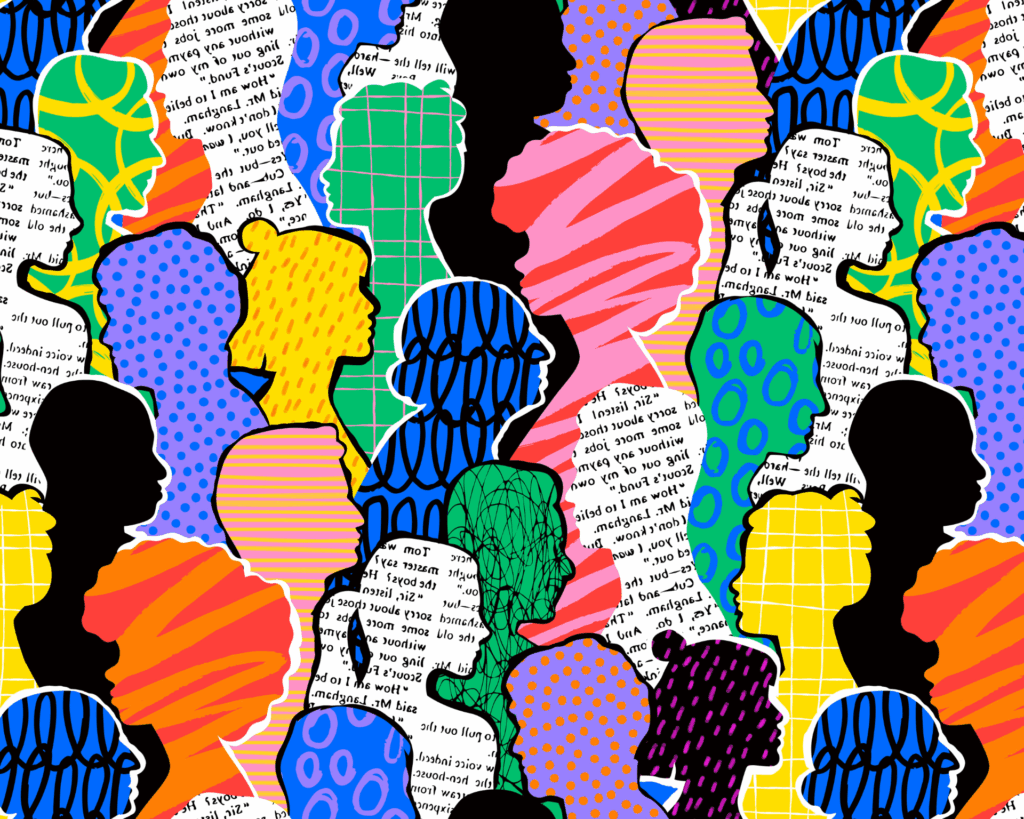The Hidden Power of Difficult Conversations in Public Health
Empowering individuals to speak up, to share what is embarrassing or shameful, is central to fostering better public health outcomes.

Read Time: 5 minutes
Published:
Congratulations to Isabel Markowski for being selected as this year’s student essay contest winner! Thank you to all the students who took the time to enter this year’s contest.
The speaker exuded a calm, maternal warmth that melted the spotlight focused on her, seeping beyond the stage as we waited for her to begin. “Everyone, close your eyes,” she said, her rich voice filling the room. “Now, think of the thing you are most ashamed of.” A pause. “Think of the thing you are most embarrassed by.” A pause. “Now, who’s brave enough to share?”
Silence. No one was brave enough.
The conversation was part of a nonprofit grant awards event. She worked for a social services nonprofit in Chicago, and was evoking the moment when someone enters an office to ask for help from strangers. The swirling shame and intense courage it takes to confront one’s struggles publicly—a condition battered by stigmatization and discrimination—is at the heart of public health in America. Indeed, this stigmatization follows a wide variety of situations: youth trying to get out of houselessness, Black adults with type 2 diabetes, and even older adults who have higher risks of Alzheimer’s Disease.
Difficult conversations involve both the brain and the heart. The brain represents the hard science of public health—data, research, and facts. But the heart, the emotions that drive us, turn these conversations into the rolling hills and mountains of an otherwise flat landscape. The heart is what makes these conversations both challenging and transformative.
Community-based organizations are no strangers to these conversations; they shoulder shame, uplift courage, and provide support. They package the facts and data of our communities within the range of emotions that connect us all—a true nexus of the head and heart of public health. A 2025 U.S. study found that community organization activities made community members 50% more likely to feel connected within their community and with the organization, feeling more comfortable and safe to reach out for what they need.
These moments of heart are small in size but vast in meaning.
I saw this power of both brain and heart firsthand while working at Common Pantry, a nonprofit food pantry in Chicago from 2019-2024. There, I developed a nutrition program from the ground up. It wasn’t just about providing food; it was about fostering relationships, connecting on a human level. I knew our guests’ kids and grandkids, listened to their favorite songs, and reminisced about childhood recipes. I also worked on policy initiatives, collaborated with food banks and hospitals, and brushed shoulders with local legislators. This commitment to treat our guests as our neighbors first, not as numbers in a line, created a foundation of trust that allowed us to build something beautiful and meaningful for the community.
As a dietitian, I had the knowledge and training in nutrition, the “brain” of public health. But I didn’t want to fall into saviorism and impose a program. I wanted it to come from the community, driven by their needs and aspirations—the “heart” of public health. I proposed hiring a public health consultant to help design a study to collect and analyze data directly from our guests. Together, we conducted 184 surveys, held 9 focus groups in English and Spanish, and gathered feedback from 23 home delivery guests.
We learned that most guests already understood healthy eating, cooked regularly, and wanted more culturally relevant ingredients, such as Hispanic foods offered at the pantry. Cooking classes and educational content on diabetes, hypertension, and cancer were the most requested components. Our guests knew about health and food, but they wanted to better understand the science between them.
This data was invaluable, but the process of collecting it was even more powerful. Each focus group began with 5-10 strangers in a room, a volunteer community leader, and a bit of silence and hesitation. But, by the end of every single group, multiple guests asked when the next focus group would be held. In these conversations, they shared recipes, talked about SNAP challenges and gaps, laughed, cried, and felt valued. One guest shared the pain of losing both legs due to diabetes, and others comforted him and offered support. These small but significant moments of connection showed that these conversations had touched the heart of the community, not just the brain.
These moments of heart are small in size but vast in meaning. They’re what culminate in tears, hugs, frustrations, and revelations. Empowering individuals to speak up, to share what is embarrassing or shameful about the world we live in, is central to fostering better public health outcomes. This is even more vital in today’s polarizing world, where trust in science, our common grasp on reality, is being increasingly politicized.
Yes, it’s messy. Yes, it’s scary. But these conversations of both brain and heart also make us human. Through these difficult conversations on the local level, we pave the way for healthier communities regionally and nationally where people feel seen, heard, and empowered to shape their present and future. They can happen. They need to happen. In other words, we have to continue to think of the things we are most embarrassed by, most ashamed of in society, and be brave enough to share.



